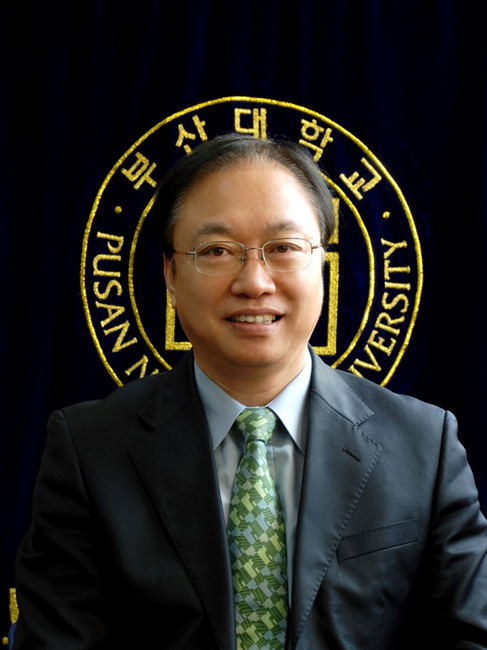应土木工程学院陈文礼教授和陈冠斌副研究员的邀请,韩国釜山国立大学(Pusan National University),韩国翰林院院士、Journal of Visualization主编Kyung Chun Kim教授将于2025年10月15日到10月30问我校,并作报告,欢迎感兴趣的师生参加。
报告时间:2025年10月16日 9:30-11:00
报告地点:土木工程学院425会议室
报告主题: Time-resolved 3D velocity field measurements on interaction of vortex ring with free surface
Abstract
This study presents a comprehensive experimental investigation into three-dimensional evolution of vortex structures resulting from the head-on collision of a vortex ring with a clean free surface. Time-resolved 3D Lagrangian Particle Tracking Velocimetry was conducted at Reynolds number (Re) of 4500 and 7400, respectively. A hierarchical vortex identification scheme was implemented to isolate and quantify the dynamics of the primary (PVR), secondary (SVR), and tertiary (TVR) vortex rings. The clean, stress-free interface and high Reynolds numbers enable assessment of free-surface deformation effects without the confounding influence of interfacial shear layers. Both Reynolds numbers exhibit a similar multi-stage interaction sequence; however, higher Re produces a distinct, long lived TVR and SVR loop structures that are shorter, wider, and less stable than at lower Re. Results also demonstrate that the free surface acts as an active, energy-feeding boundary, influencing vortex formation, growth, and stability. Skeleton-based quantification resolves the complete formation, interaction, and dissipation processes of each vortex ring, capturing features such as the phase-locked SVR instability. These findings provide new experimental evidence of how Reynolds number and free-surface motion jointly govern vortex ring evolution and offer a high-fidelity benchmark for future numerical and theoretical studies of vortex ring-deformable boundary interactions.
报告时间:2025年10月22日 9:30-11:00
报告地点:土木工程学院425会议室
报告主题: Evolution of 3D vortex structures behind freely falling plates
Abstract
Freely falling of a plate contains very complicated unsteady characteristics. Visualization plays a crucial role in scientific research, particularly in fluid dynamics, where it aids in understanding complex flow phenomena that are difficult to interpret numerically. Willmarth et al. conducted many of experiments on the freely falling disks in the mixed solution of water and glycerol. They noted that the modes of the motion during falling were determined by the Reynolds number and non-dimensional moment of inertia I*, then they drew a Re- I* phase diagram, in which yielded the boundary between the stable and unstable mode. Most of the studies focused on trajectory of a freely falling plate or 2D vortical structure using PIV to investigate the instantaneous flow structure. This study investigates the vortical structure around a free falling rigid plates using a time-resolved three-dimensional Particle Tracking Velocimetry (4D PTV). The shape of plates was square, and rectangular with different aspect ratio. Both plates were released into a water-filled tank then 4D PTV measurements were made during free fall motions. The 3D vortical structures were obtained by Q criterion using 3D instantaneous velocity field data around the moving plate. Hairpin vortex structures are generated with the first slanting motion of square plates. With moving forward in a slanting motion, a hairpin packet structure was observed followed by deceleration of plate.
报告人Kyung Chun Kim教授简介

Prof. KC Kim received his BA degree at Pusan National University, Korea in 1979. He received MS and Ph.D degree at KAIST, Korea in 1981 and 1987 respectively. Since 1983, he is a professor at School of Mechanical Engineering in Pusan National University (PNU), Korea. He was invited as a visiting professor from Ottawa University in Canada for 1989-1990. He joined at the department of theoretical and applied mechanics in University of Illinois, Urbana-Champaign, USA as an invited professor for 1996-1997. He was invited as a special foreign professor from the University of Tokyo, Japan for 2009-2010. On the basis of his research outcomes, he became a member of National Academy of Engineering in Korea in 2004. He received the outstanding paper awards (1995, 2002) from KSME and KOSEF. In 2009 and 2016, he received the Academic award and the first Yeosong award from KSME. He received Nakayama award in 2012 and Asanuma award in 2014 based on contributions in world Visualization society. KC Kim was selected as a PNU Distinguished Professor in 2018. In 2019, he received Busan Science and Technology award.
Prof. KC Kim is currently serving as an Editor in Chief for Journal of Visualization. In 2020, he was selected as the director of Regional Leading Research Center for Eco-friendly Smart Ship. His research interests include: Turbulence, Two-Phase Flows, Flow Visualization, and Artificial Intelligence.

